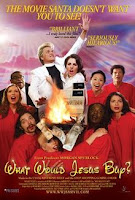Starting University can be daunting. For most, becoming a University student is the beginning of a new academic challenge and social life. However, with these exciting ventures comes financial responsibility.
The post Four top tips about student finance appeared first on OUPblog.
The following article was published February 21, 2012 by fivecentnickel.com.
Teens and Money
Written by Jeffrey Steele
The last 10 to 15 years have seen unprecedented numbers of Americans doing wacky things with their money, and paying big time for their mistakes.
About 12 years ago, for instance, a lot of folks bought into the tech bubble just before it became a tech wreck. Two years later, having seen their nesteggs decimated by the stock market plunge after dot.com went dot.bomb, many sold out of stocks in the trough, only to watch the markets suddenly rocket higher. Then, having licked their wounds and assembled a bit of cash, many couldn’t resist buying into housing at the top of that bubble, only to be wiped out again.
But why should such miscues be any surprise here in the good ol’ United States, where personal finance seems the most taboo of scholastic subjects?
I mean, this is a land where in our 12 years of elementary, middle, and high school, we learn obscure tidbits about the Magna Carta, far-out geometric algorithms, factoids about the flora and fauna of Tanzania, and other insights we’ll never use again, but are shut out of any kind of lessons on the one thing we’ll need to do every minute of the rest of our lives, which is manage money.
Those Awkward Years
No wonder the only group more prone to bonehead cash maneuvers than American adults is American teens. The University of California reported a few years ago that American teens were spending at about a $179 billion annual clip. Yet, when given a national standardized money management test, high school seniors tallied an average grade of 48.3 percent, a failing score.
“High school seniors have little knowledge of money management, savings, investments, income and spending,” the UC system reported. “A vast majority of students 16 to 22 have never taken a class in personal finance, with two-thirds admitting they could benefit from more money management lessons. Alarmingly, nine percent were rolling over credit card debt each month.”
Today, only nine states have any type of program to assess students’ financial literacy, and fewer than one in five teachers feels he or she is equipped to teach classes in financial literacy, according to a recent study by the President’s Advisory Council on Financial Capability.
That report found financial literacy on the part of both the population as a whole and on the part of teens was low, which may have to do with increasing legions of folks being “unbanked,” and having higher levels of indebtedness, as well as lower rates of wealth accumulation and financial planning.
I can certainly attest from personal experience to the comparative lack of personal financial skills by American teens. Why, I recall that as a teen-ager, my own main interest in life was blowing as much money as possible on eight-track tapes.
And this was in 2004.
New Initiative Needed
Just kidding, of course. But it’s clear we need a new initiative to tackle teen financial illiteracy. And it’s being provided by Amsco School Publications, Inc., a 75-year-old New York City-based family-owned company that publishes textbooks and supplementary materials for students in grades 7 through 12.
Amsco School Publications has recently created Personal Finance, a textbook designed to teach American teens what they need to know to live fiscally responsible lives. That includes setting financial goals, researching and planning careers, understanding banks, knowing where to save and invest, using credit wisely, and comprehending why insurance is needed, even at young ages.
I recently had a chance to talk to Amsco’s vice president of sales and marketing Irene Rubin, and asked her why her company decided to tackle teen literacy. “We knew there’s a problem, because of the credit card debt
Part of being independent is being able to spend your money wisely. That may not sound like a hard thing to accomplish, though it can be a little trickier than it seems. You need to learn how to have a lot of self discipline. This article will give you some tips on how to make your personal finance work for you.










